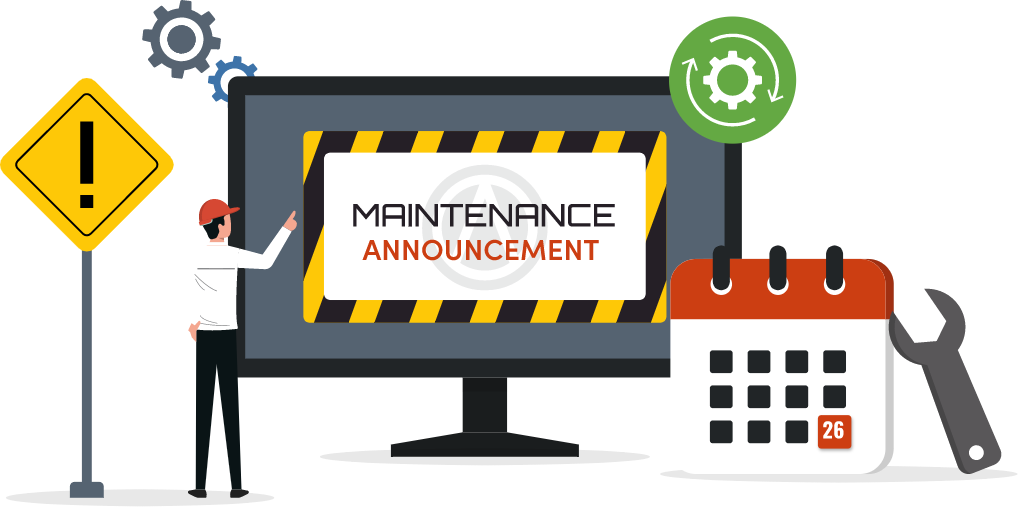What's the biggest reason food waste happens in restaurants?
The main causes include over-ordering, inaccurate forecasting, poor inventory control, and lack of communication between front-of-house and back-of-house teams. Many of these issues can be solved through integrated digital systems that provide real-time visibility.
How Technology Helps Restaurants Cut Food Waste
The Hidden Cost of Food Waste
Every restaurant owner has seen it - the walk-in full of ingredients that never made it to the plate. A little over-ordering here, a few over-prepped items there, and suddenly you're tossing hundreds of dollars into the trash. Studies show that 4% to 10% of all food purchased by restaurants ends up thrown away before it reaches a guest.
The issue isn't just about waste - it's about profit loss, higher food costs, and missed opportunities to operate more efficiently. The good news is that modern technology is making it easier than ever to track, measure, and reduce food waste. From POS systems that identify sales patterns to inventory tools that flag overstocked items and forecasting software that predicts demand, today's digital solutions give restaurant owners more control over their kitchens than ever before.
Cutting food waste isn't about perfection - it's about awareness, visibility, and smart decisions backed by data. With the right technology in place, restaurants can reduce waste, protect margins, and operate more sustainably - all while serving the same great food their guests love.
Root Causes of Food Waste in Restaurants

Before technology can solve the problem, restaurant owners need to understand why food waste happens in the first place. Most waste doesn't come from negligence - it comes from habits built over time, human error, and the daily chaos of running a busy kitchen. The good news is that every cause can be addressed once it's clearly identified.
One of the biggest drivers of waste is over-ordering. Without accurate demand data, managers often buy "just in case" instead of "just enough." This leads to spoiled produce, expired ingredients, and unnecessary costs. Another major contributor is inaccurate forecasting - guessing how much to prep or cook each day without reliable sales trends results in leftover batches and unused portions. Even well-intentioned chefs can overproduce to avoid running out of popular items, but this safety margin often turns into waste.
Inventory mismanagement also plays a huge role. When stock levels aren't tracked in real time, it's easy to lose sight of what's on hand. Items get pushed to the back of the cooler, prep staff open new containers before finishing old ones, and soon, expired food piles up unnoticed. Additionally, menu complexity can create waste - the more ingredients used across dishes, the harder it is to manage portions and shelf life.
Finally, communication gaps between front-of-house and back-of-house teams can amplify waste. If servers don't share slow item trends or managers don't adjust prep lists accordingly, production keeps outpacing demand.
Recognizing these patterns is the first step toward solving them. By pinpointing where and why waste occurs, restaurants can begin using technology - from POS analytics to automated inventory tools - to prevent it before it starts.
Transform Your Restaurant Operations Now!
Effortless Inventory Tracking with Altametrics!
The Role of POS Systems in Waste Reduction
A restaurant's Point of Sale (POS) system does far more than process transactions - it's the digital backbone of modern operations and a key weapon in the fight against food waste. By collecting real-time data on what sells, when, and how often, POS systems give restaurant owners the insight needed to make smarter, waste-free decisions. Here's how -
1. Track What's Selling and What's Not
Modern POS systems log every sale, modifier, and menu item, showing exactly which dishes are popular and which sit idle. If certain items consistently underperform, managers can adjust prep lists, reduce ingredient orders, or remove those dishes altogether. This data-driven approach replaces guesswork with clear visibility.
2. Use Real-Time Reporting to Stay Agile
With real-time data, managers can react instantly to changing trends. If a menu item suddenly slows down, prep can be paused to avoid excess production. If a new special sells out fast, ingredients can be reordered promptly. Quick adjustments based on live data help prevent over-prepping and spoilage.
3. Integrate POS with Inventory for Smarter Control
When your POS links with an inventory system, ingredient quantities automatically adjust as items are sold. This keeps stock levels accurate without manual counting and ensures that reorders are based on actual consumption, not outdated assumptions.
4. Improve Menu Engineering for Profit and Efficiency
By combining POS sales data with food cost insights, restaurants can identify low-margin or high-waste items. Simplifying the menu based on this data reduces inventory complexity, streamlines prep, and keeps ingredients fresher.
A smart POS system turns daily sales data into actionable insights - helping restaurants cut food waste, save money, and maintain a more efficient kitchen operation.
Smarter Inventory Management Through Automation
One of the biggest contributors to food waste in restaurants is inaccurate or outdated inventory tracking. When counts are done manually or inconsistently, it's easy to lose sight of what's in stock, how long items have been there, or when they'll expire. Automated inventory management systems eliminate these blind spots by providing real-time visibility and control over every ingredient that enters or leaves your kitchen.
1. Real-Time Tracking and Visibility
Automation tools update inventory levels the moment ingredients are received, used, or sold. This ensures that managers always know what's on hand - no more over-ordering because of missing data or running out of essentials during peak hours. Many systems even track expiration dates, sending alerts before items spoil.
2. Bar-code Scanning and Digital Counts
Instead of relying on handwritten sheets or spreadsheets, automated systems use bar-code or QR code scanning to record every product. This not only saves time but also reduces human error. The result is a more accurate inventory that reflects real usage and prevents unnecessary waste.
3. Automated Reordering and Par Levels
Automation also makes reordering smarter. Once inventory levels drop below a preset par, the system can automatically generate purchase orders based on historical sales and forecasted demand. This keeps stock balanced - not too high to cause waste, and not too low to risk shortages.
4. Integration with POS and Suppliers
When inventory tools sync with your POS and supplier systems, your data flows seamlessly from sales to ordering. You can see exactly how much of each ingredient was used per item sold and what needs replenishing. This complete visibility helps managers make precise, data-backed decisions instead of relying on intuition.
By automating inventory management, restaurants gain tighter control over their costs, minimize waste from overstocking, and save valuable labor hours - all while ensuring that the freshest ingredients make it to every plate.
Forecasting Tools

Forecasting is one of the most powerful ways technology helps restaurants cut food waste. When you can accurately predict how much you'll sell, you can plan how much to prep, cook, and order - preventing both shortages and spoilage. Forecasting tools combine historical sales, weather patterns, and event data to help restaurants operate proactively instead of re-actively.
1. Data-Driven Demand Predictions
Modern forecasting software analyzes past sales trends to predict future demand with remarkable accuracy. For instance, it can spot patterns like weekend peaks, slower midweek traffic, or seasonal shifts in menu preferences. This allows managers to order ingredients and schedule staff based on real expectations, not guesswork.
2. Incorporating External Factors
Advanced systems take things a step further by integrating external data, such as holidays, local events, or weather forecasts. A sudden heatwave might increase beverage and salad sales, while a rainy week could shift demand toward soups or comfort foods. Factoring in these details helps fine-tune prep and purchasing decisions.
3. Aligning Prep and Production with Forecasts
Accurate forecasts empower chefs and prep teams to produce only what's needed. Instead of cooking extra "just in case," teams can rely on data to guide batch sizes and daily prep lists. This prevents overproduction - one of the biggest sources of kitchen waste.
4. Continuous Learning and Adjustment
Forecasting tools improve over time. The more data they collect, the smarter their predictions become. By continuously comparing forecasted versus actual sales, restaurants can adjust their approach and get more precise every week.
In essence, forecasting turns uncertainty into confidence. It allows restaurant operators to strike the perfect balance between demand and supply, ensuring that every dollar spent on ingredients translates into meals served - not food thrown away.
Using Data Analytics
In the restaurant business, purchasing is a delicate balance - buy too much, and ingredients spoil; buy too little, and you disappoint guests. Data analytics bridges this gap by helping restaurant owners make smarter, evidence-based decisions that reduce waste while maintaining consistency and quality. With the right analytics tools, purchasing becomes less about instinct and more about precision.
1. Turning Data into Actionable Insights
By pulling information from your POS, inventory, and forecasting tools, data analytics platforms give you a full picture of how ingredients move through your business. You can identify which items are frequently over-ordered, which perish quickly, and which menu items lead to the most waste. This transparency enables managers to fine-tune ordering practices to match real demand.
2. Tracking Key Performance Indicators (KPIs)
Metrics like food cost percentage,waste percentage, and variance between forecasted and actual usage help you understand where losses occur. Regularly reviewing these KPIs turns raw data into an early warning system - allowing you to spot inefficiencies before they become expensive problems.
3. Smarter Supplier Management
Analytics also improves how you work with vendors. By comparing order history with actual usage, you can negotiate better delivery schedules, smaller batch sizes, or more frequent restocks. This reduces excess stock that often spoils before it's used.
4. Continuous Optimization
Purchasing data shouldn't sit idle - it should evolve. Over time, analytics tools can highlight long-term trends such as seasonal fluctuations, ingredient price shifts, and customer preferences. By adapting purchasing strategies around these insights, restaurants maintain efficiency all year round.
When data drives purchasing, waste reduction becomes a predictable outcome. Each order reflects true operational needs, helping restaurants maintain leaner inventories, lower costs, and a more sustainable kitchen environment.
Training Staff to Use Tech Effectively
No technology can reduce food waste on its own - it takes a well-trained team to make it work. Even the most advanced POS or inventory system is only as good as the people using it. That's why staff training is a critical step in turning technology into real, measurable results. When every team member understands how to use the tools correctly, data stays accurate, processes stay consistent, and waste naturally decreases.
The first step is to create clear training paths for both front-of-house (FOH) and back-of-house (BOH) employees. FOH teams should understand how sales data and order accuracy affect waste levels, while BOH staff need to know how to record prep usage, update inventory counts, and log waste properly. Hands-on training sessions, rather than just manuals or checklists, help reinforce these habits and build long-term accountability.
Next, it's important to make technology approachable. Digital dashboards, mobile apps, and visual reporting tools simplify tasks and reduce human error. For example, a prep cook should be able to scan an item or log a usage entry in seconds - not navigate through complex menus. When tools are intuitive, compliance becomes second nature.
Finally, communication and reinforcement are key. Managers should hold regular check-ins to review waste trends, share insights from POS or inventory reports, and celebrate improvements. This keeps the entire team invested in the process.
When training is consistent and technology feels empowering rather than intimidating, your staff becomes an active part of the solution. Together, they can turn data into daily action - and waste reduction into a shared success story.
Smarter Kitchens, Sustainable Future
Reducing food waste isn't just an environmental responsibility - it's a business advantage. Every pound of food saved translates into lower costs, higher margins, and a more efficient operation. By using technology like POS systems, inventory automation, and forecasting tools, restaurants can move from reactive waste control to proactive efficiency management.
Technology gives restaurant owners the visibility they've always needed - real-time data on what's selling, what's sitting, and what's spoiling. With this insight, decisions become faster, smarter, and more accurate. The result is a kitchen that runs lean, staff that works with clarity, and a business that wastes less and earns more.
But the real power comes from integration. When every system - from ordering to scheduling - speaks the same language, you gain total control over your operations. And that's where comprehensive solutions make all the difference.
Reduce Food Waste with Altametrics
If you're ready to take the next step toward a smarter, more sustainable restaurant operation, Altametrics can help.
Altametrics offers a complete suite of connected restaurant management tools - including advanced inventory tracking, demand forecasting, and purchasing automation - all designed to help you cut waste, control food costs, and improve profitability. With real-time data and seamless integration across your business, you'll have everything you need to make informed decisions that save both food and money.
Start reducing waste and boosting your bottom line today by clicking "Schedule a Demo" below.



































































































































































































































































